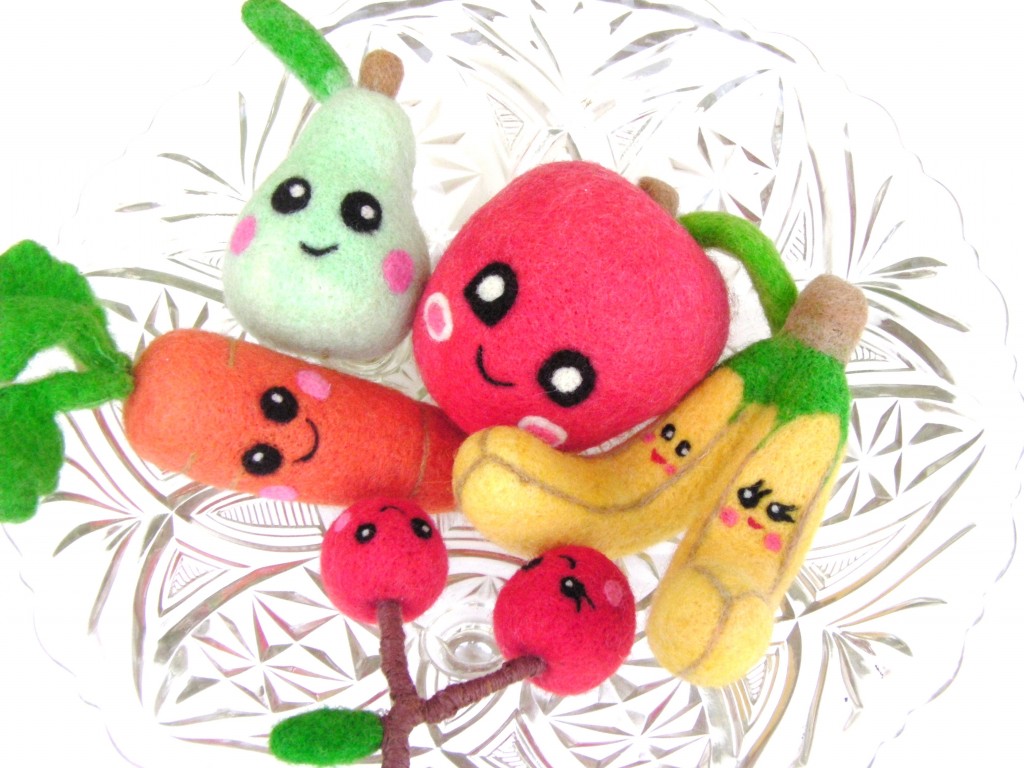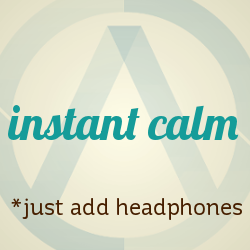Archive | December, 2012
3 steps for a Beautiful Mind (and beautiful life)
Tomorrow I’ll be speaking at a life skills workshop for young women called Beautiful Minds.
In preparing for the talk, I’ve reflected a lot on how I often felt as a girl (bullied, isolated, depressed) to how I often feel now (positive, connected, resilient).
As you can see – a pretty big difference.
But it wasn’t just part of growing up. All the positive things I am now are all things I’ve learned.
And lemme tell ya, if this recovering pessimist can do a 180 towards joy – you can too!
Because having more beautiful thoughts towards yourself and others, doesn’t mean you never suffer. But it does mean you can weather the tough times more easily. And that in turn creates a beautiful life.
So here are 3 simple steps to begin creating your Beautiful Mind.
-
Do a 180 from your Inner Bully to your Inner Bestie
Inner Bully. Inner Critic. Gremlins. Monsters. Inner Bitch.
Whatever you call it - everyone has a critical inner monologue.
That harsh critical voice is not the voice of your true authentic self. It is a part of you that is overly concerned with your safety.
Your Inner Bully wants to prevent you from taking risks in order to protect you, especially from potential social isolation or humiliation.
Understanding that your Inner Bully has your best interests at heart can actually take away a lot of the sting from the repetitive, critical things that your Inner Bully says.
But the guard that keeps you safe also keeps you stuck and small.
So how do you move past the Inner Bully so you can get what you want?
Enter your Inner Bestie. Your Authentic Self. Your Inner Bliss Sis’.
Your Inner Bestie is the part of you that can soothe, motivate and inspire. And you connect to your Inner Bestie through kindness.
Imagine someone that is easy to love. Your best friend, your soulmate, your kindred spirit.
Imagine the one you love is scared and anxious. What do you say to them?
“Yes, you’re a loser, no wonder no-one loves you”
HELL NO!
You soothe them with gentle loving words of kindness.
The same is true for your Inner Bully. They’re just scared. But you can soothe them by connecting to your Inner Bestie. By using thoughts, words and actions that you usually reserve for your loved ones.
And the seven most powerful words your Inner Bestie can say to your Inner Bully?
“Thanks, but I got this one covered.”
Phew.
-
Practice gratitude
In a day and age where everyone can share their amazing lives all over Facebook, Twitter and Instagram it can seem like everyone is having a field day but you.
It’s easy to forget that we all share our best bits on social media and none of the bloopers.
Certainly comparing your body with someone else’s can be a recipe for jealousy. Or conceit. And neither feels particularly beautiful.
On the flipside, gratitude turns everything you have, are and do into enough.
So ya gotta get grateful ‘bout what ya got!
Simply noticing when you are judging, criticising or comparing is a powerful step towards stopping this behaviour. Then you can practice doing a 180 towards gratitude.
For example, if you’ve caught yourself wishing you had the long lean legs of the girl who just walked past in skimpy shorts - simply say to yourself “Hello judging mind” or “I notice I’m comparing now”.
Then take a deep breath and say “I release these thoughts.”
Next, take some time to appreciate what your legs do for you. Say “Thank you legs for allowing me to run to my lover / skip with my kids / dance my butt off”
It may seem silly at first, but remember – negative self talk is just as much a practice as positive self talk. So you might as well say something nice.
If you have any guilt or shame surrounding judgmental thoughts like “Oh no, I’m comparing. I shouldn’t have compared I’m a terrible person why can’t I stop comparing I’m such a failure GAAAAAH!” - it’s a sure sign your Inner Bully has kicked into gear.
Take a deep breath, say “I release these thoughts too” and go connect to your Inner Bestie.
Cultivating awareness and then consciously practicing non-attachment to our judgmental, critical or comparative thoughts is wonderfully liberating.
-
Love yourself

Self love is a journey and a practice. It’s about discovering who you are, why you are and allows you to express your authentic self more fully.
Authenticity may alienate others from you, but it also attracts the right people to you. The more you are yourself, the quicker your tribe can recognise you and you them. And these connections are the most precious of all.
Create a quiet safe place and begin a dialogue with your authentic self. Ask yourself questions like
- What am I intensely interested in?
- What do I value?
- What is keeping me feeling stuck?
- What do I need in order to release my stuckness?
- How can I take care of myself?
- What brings me utter joy?
- What truly comforts me?
- What does kindness feel like?
- What problem in the world am I called to heal?
- What do people thank me for?
- What do people tell me they love about me?
- What do I love about me?
Connect to your truth. And then use these strengths and unique qualities as affirmations.
Instead of chanting “calm blue ocean, calm blue ocean” - see yourself as someone who matters. See yourself as worthy of love and belonging – because you truly are. Try these affirmations on for size:
- I love and accept myself unconditionally as I am
- I am worthy of love and belonging
- In this very moment, all that I am, have and do is enough
- I love ____ about me (fill in the blank with the specific quality or talent that only you have)
And if it feels strange or unnatural to say nice things about yourself, fake it until you become it. Condition yourself with love.
Begin with a beautiful mind and it will definitely lead to your beautiful life.
What practice do you use to create your beautiful life? What do you think of affirmations? Are they useful or do they seem silly? How would you practice gratitude? Let me know in the comments below.
Inspiration Broadcast
5 happy quotes and images to get you in a good mood
Want more inspiration? Follow me on Pinterest
Good Mood Food - 5 ways food can make you happy
Do you ever wish you could go back and tell your younger self all the info you know now? One of the biggest nuggets of wisdom I would share with young Tahlee is “food affects your mood!”
Having struggled with poor mental health, hypoglycaemia, digestive troubles, allergies + disordered eating – I feel like I’ve had every food-related issue on the planet!
The good news is, that while I can’t go back in time share with my younger self all the wisdom I have now – I CAN share it with you. Huzzah!
Below I break down my top 5 good mood food sources, how you can consume them, and why they’re a mood saver.
1. Protein
What: Protein is all the rage at the moment. It seems everywhere you look people are gulping down protein shakes (I’ve done it); eating high protein diets (done that too); and grilling vegans about where they get their protein sources from.
Here’s the thing – you DO need protein. It’s one of the basic building blocks of the body, but your body can’t store it well so you need to eat it. However, you only need to consume about 0.7g protein per kilo of bodyweight per day. (Unless you’re running marathons or lifting really freakin’ heavy weights. Then it’s about double.)
Say you weigh 70kg. Your daily minimum protein requirement is 0.7g x 70kg = 49g
How: 49g protein per day is the equivalent of eating an egg for breakfast, snacking on some edamame (baby soy beans) and having a chicken breast for dinner. Obviously if you’re vegetarian or vegan – you need to replace the meat / eggs with some more tofu, beans, nuts + seeds – but you get the idea.
Don’t get hung up on the numbers (but if you’re interested, here is a good list of amounts). Just remember to include a diverse range of foods that bring you joy which are high in protein such as: meat, fish, dairy, eggs, legumes, seeds, and nuts.
Why: Protein helps keep hypoglycaemia in check. (I call it psycho-glycaemia – if you’ve ever seen me hungry, you’ll know why). Having stable blood sugar means your mood doesn’t go swinging wildly from sugar-fuelled elation to sugar-crashing maudlin. Plus if you eat a small bit of protein with each meal the likelihood of the 3pm chocolate binge is minimised.
2. Carbohydrates
What: Contrary to a lot of current fad diet info – carbs are not the enemy. Carbohydrates are converted into glucose for energy. And guess which organ in the body requires the most glucose to function?
Your brain.
Yup. The grey squishy super computer inside your skull needs carbs for you to think – which is why people often feel fatigued + foggy on low / no carb diets. You don’t need to worry about what time of the day to eat them but the types of carbs you choose are important.
How: Go for low GI versions to stay off the sugar roller coaster, particularly if you have insulin resistance, Polycystic Ovarian Syndrome (PCOS) or diabetes.
Vegetables, quinoa, and brown / wild rice are excellent sources. Obvs stay away from highly processed carbs like white bread and corn flakes. They are no good to anyone!
And as luck would have it, if you eat protein with your carbs, the overall GI of the meal is lowered. (PS – my brain hears that as a standing ovation to eat chocolate covered almonds!)
Why: Low GI carbohydrates give you sustained energy, fuel your brain and fill you up. Nuff said.
3. No Allergens
The last time I drank a milkshake, I was in a world of pain. Ditto for porridge (that’s oatmeal for any US readers), turkish bread and weet-bix. Can you tell gluten and dairy are not my BFFs? For years, I couldn’t and had symptoms of Irritable Bowel Syndrome (IBS).
A whopping 10-20% of the population suffers from IBS symptoms which include bloating, abdominal pain, constipation, diarrhoea, excessive wind and fatigue. And while there are possible triggers of IBS like stress or viruses – it’s believed the major underlying trigger is food intolerance.
And food intolerances aren’t just related to digestive disorders. I’ve recently been on the FAILSAFE diet to heal my hives because I have a sensitivity to salicylate (a natural aspirin) which is found in most foods.
How: Pay attention to how you feel after you eat. It may even help to keep a small food journal for a while. It doesn’t need to complicated. Just jot down (as soon as you can after you eat) what you ate and how you felt afterwards. Once you know the foods that hurt your health, you can easily cut them out or find substitutes.
Also – with any allergy or digestive disorder, I cannot recommend more highly seeing a health practitioner. They are often able to see patterns that you might not, offer herbal or medical support to relieve symptoms, and guide you in a recovery plan.
Why: Food intolerances are no fun. Running to the toilet 3 times a day, IBS symptoms or being covered in hives isn’t normal. You don’t have to suffer.
4. L-Tyrosine
What: L-tyrosine is a non-essential amino acid which means your body can create tyrosine from other amino acids (molecular structures that help build protein) from food for optimal health. Tyrosine can be found in many high protein foods such as chicken, turkey, fish, avocados, dairy products, nuts, beans, and seeds.
Most importantly, l-tyrosine is a pre-cursor to the neurotransmitter dopamine - which is a “feel good” chemical in your brain responsible for influencing mood and sleep.
There is quite a lot of anecdotal evidence to suggest that using an l-tyrosine supplement increases energy and focus. However, there are few clinical trials to back up this evidence.
How: L-tyrosine can be found in most pharmacies and health food stores as a supplement. I prefer the brand Musashi. A teaspoon in a cup of hot cocoa is my favourite way to drink it (you can’t taste it at all).
Why: Personally, I have found using l-tyrosine to be very helpful during periods of prolonged stress or when I’m feeling particularly “blue”. I find it relaxes me, improves my attitude, and helps me sleep. Once again I highly recommend seeing a health practitioner before undertaking any supplementation.
5. Magnesium
What: Magnesium is a mineral that is critical for cell function, particularly energy production. Imagine your muscles have a key and a lock. In order to move your muscles, magnesium acts like a key that unlocks muscle cells, allowing potassium and calcium to move in and out in order to contract and relax the cells.
Low levels of magnesium have been linked to an increase in muscles cramping, twitching and irritation.
How: Use a magnesium supplement or increase your consumption of whole-grain products, green leafy vegetables, nuts, legumes, seeds and mineral water.
Why: Personally I found using a magnesium supplement helpful to couteract Delayed Onset Muscle Soreness (DOMS) - which is just a fancy term for when your body is sore for a couple of days after a workout. Also, my partner tells me I twitch in my sleep at lot less when I have magnesium regularly.
As always, double check with your health practitioner, because magnesium supplements may not be good for you especially if you have kidney problems.
One last thing. You can see that a diet high in nutritious, unprocessed food is a great basis for a good mood. But if you’ve been feeling blue for a while; disconnected, unmotivated or downright depressed - PLEASE see your doctor. There is no shame in getting help for depression.
So what’s your favourite good mood food?
Photo: Handmade Felt Toys

